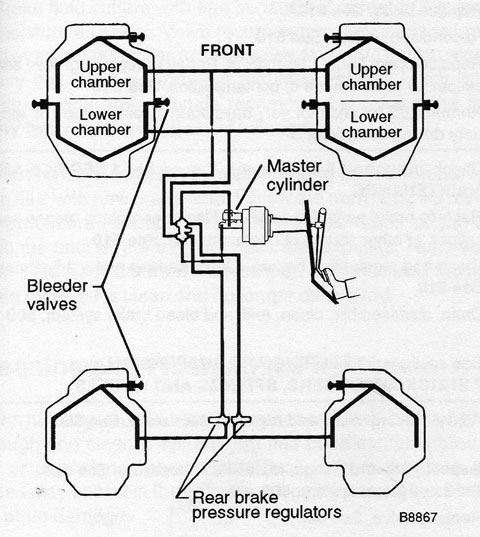|
I've never had a symptom like that, so my guess that you're correct to suspect the right caliper isn't acting with equal force on the rotor is only theory. Seems like the correct theory to me.
But if you say the hard lines were smashed, was there a collision, perhaps with a curb? How'd they get that way? And when you speak of "lines" you are including the flexible hoses I assume, and there's no chance the upper and lower circuits were reversed when the pipes were replaced.
Lucid suggests the common fault of the rebuilder mixing up caliper halves, but I did not consider that, thinking the symptom when that happens is a very spongy pedal -- air in the unbleedable chamber -- more than a pull to one side, it would keep an ordinary soul from ever getting to the test drive segment. Could be, though, just check for the dimples.
Calling the bleeding technique into question is the result of many, many masters needing to be replaced AFTER brake work with bleeding. This happens when the pedal is used to bleed the system and it is pushed beyond its normal travel, causing the rusty back halves of the master cylinder to scratch up and lodge rust in the seals. Once that happens, the master is trash. Or core. And it isn't the owner's fault, it is the fault of the fixer. But that is unrelated to the pulling. The symptom of the scratched seals is slow sinking of the pedal with constant force. That's why most of us use a pressure bleeding technique, or just gravity bleed - no pedal action at all.
I'm afraid I haven't helped much...
--
Art Benstein near Baltimore
What do you call a fish with no eyes? A fsh.
|


